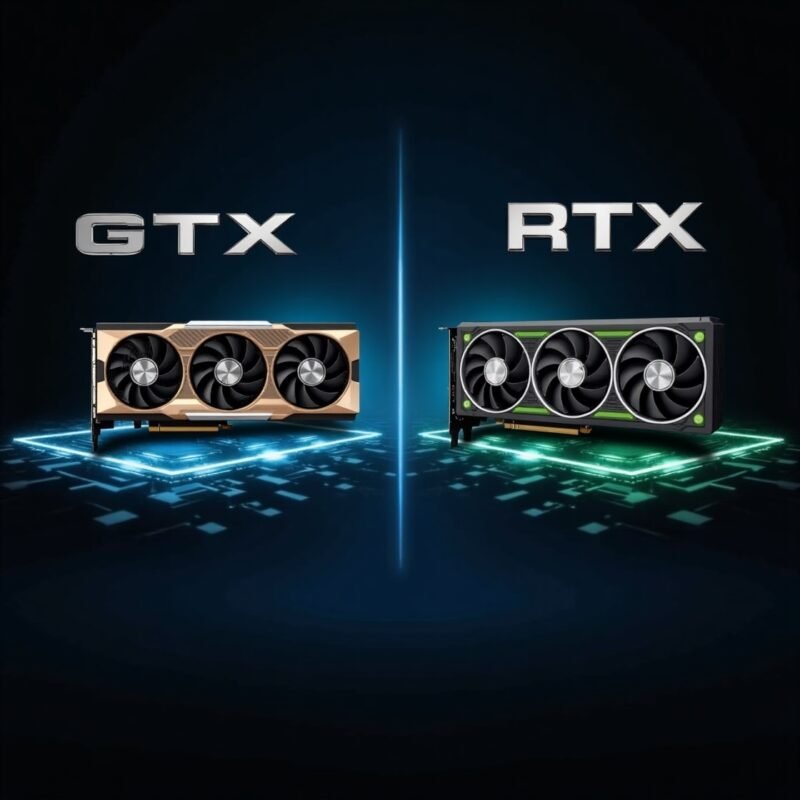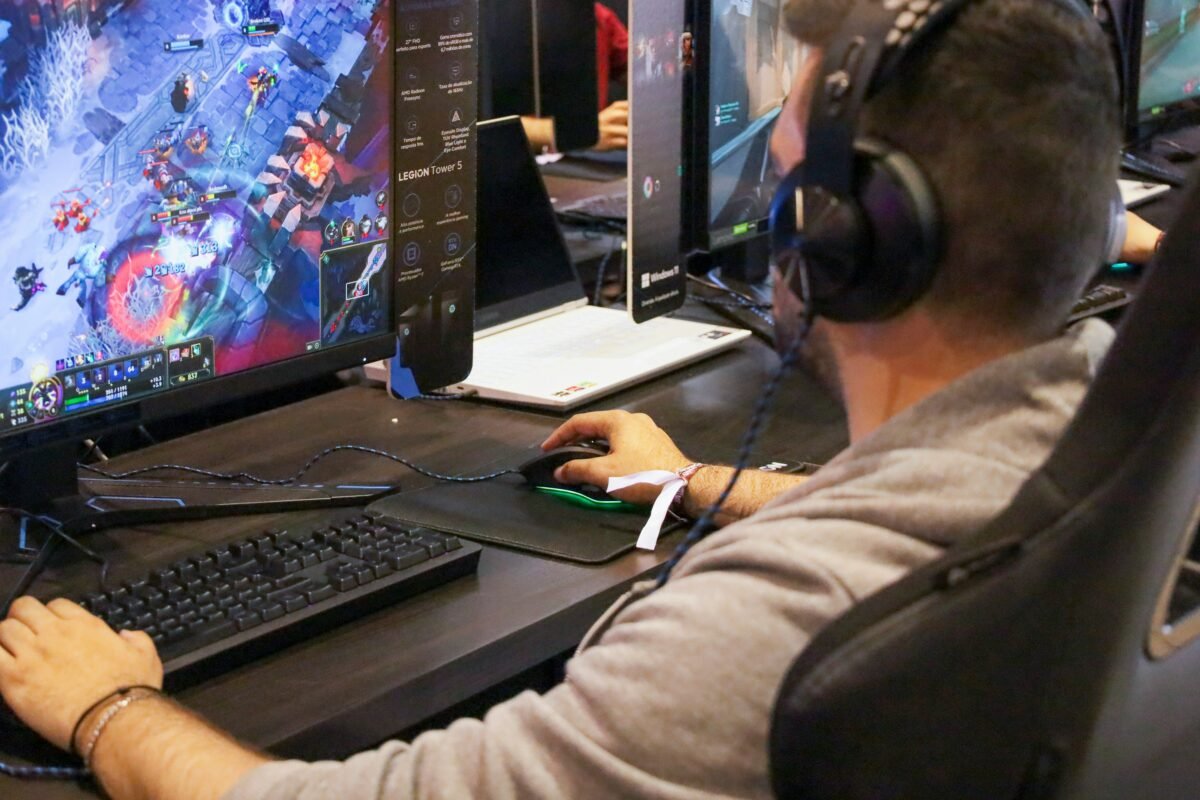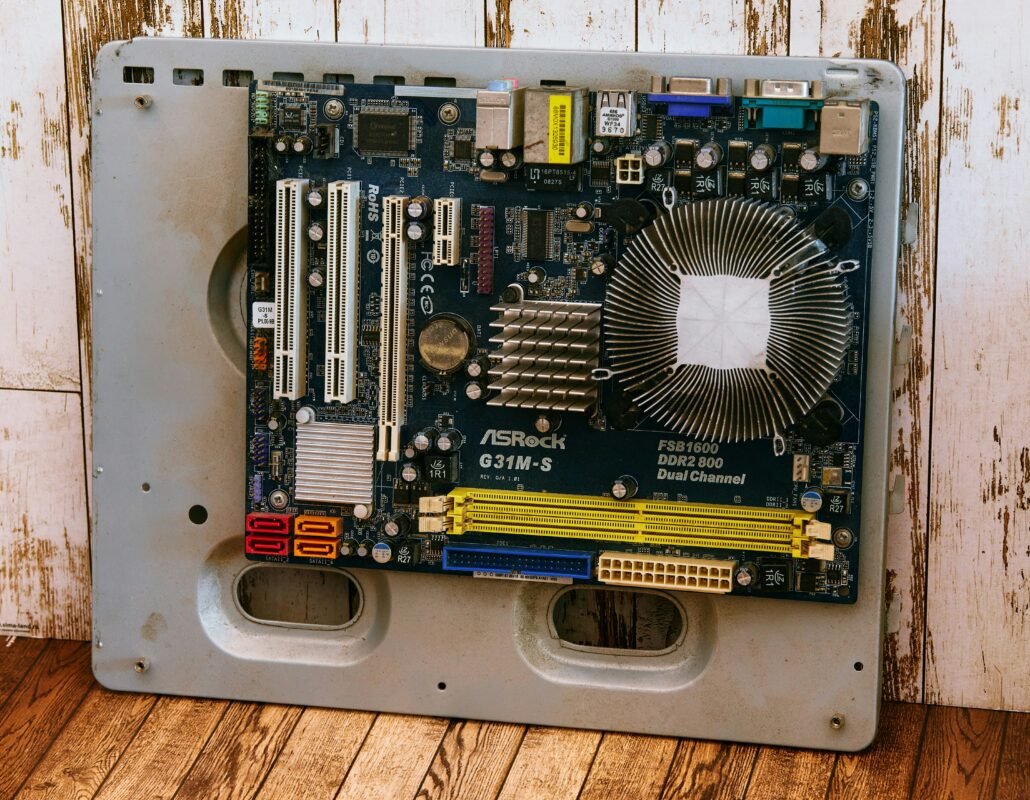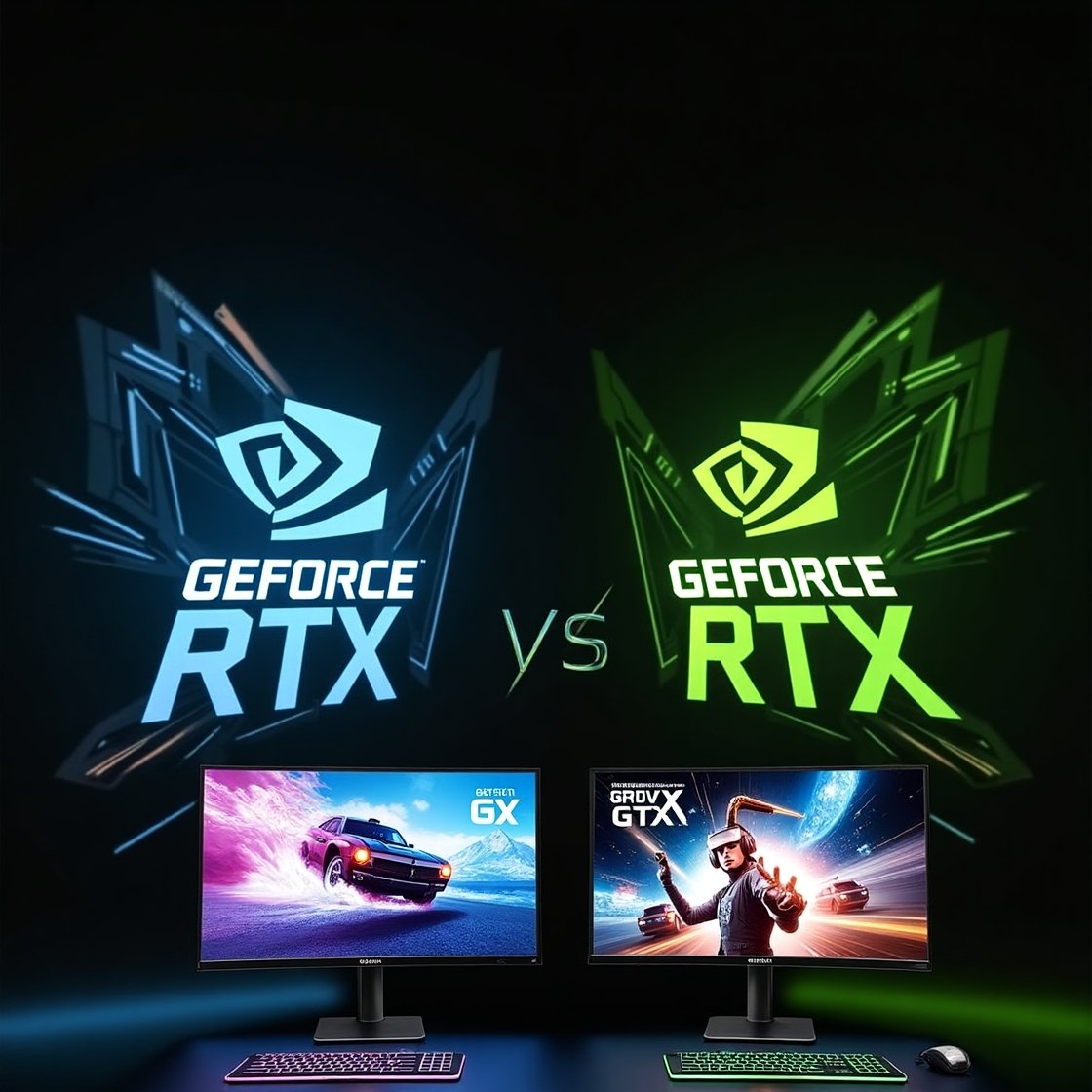Your Graphics Card Choice Shapes Your Gaming Future
When it comes to buying a gaming laptop or desktop, your graphics card (GPU) is the single most important decision you’ll make. For years, NVIDIA’s GTX series dominated the gaming world with great price-to-performance and reliability. But with the introduction of the RTX series, the landscape changed—ushering in new levels of performance, realism, and technology.
Today, the big debate is: Is GTX or RTX better for gaming?
Whether you’re a competitive player looking for high FPS, a content creator, or someone who wants to future-proof their investment, this comprehensive guide will help you make an informed decision.
We’ll dive deep into:
- The differences between GTX and RTX GPUs
- How each performs in modern games
- Ray tracing, DLSS, and other exclusive features
- Use cases, pricing, and practical buying advice
- The future of PC gaming and how your choice affects it
- FAQ, buying checklists, and expert pointers
Let’s unlock everything you need to know about GTX and RTX—so you can game smarter, not harder.
What Are GTX and RTX GPUs? (Central Entities)
GTX and RTX are two generations of graphics card families from NVIDIA, the world’s leading GPU manufacturer.
- GTX stands for Giga Texel Shader eXtreme. It was the performance gold standard for over a decade, offering cards like the GTX 1050, 1060, 1070, 1080, 1650, and 1660 Ti.
- RTX stands for Ray Tracing Texel eXtreme. This series (including RTX 2060, 3060, 4060, 4070, 4080, 4090, etc.) brings real-time ray tracing and AI-powered features into gaming.
Central Search Intent:
Most users asking “Is GTX or RTX better for gaming?” are seeking to optimize their hardware purchase for the best balance of frame rates, visuals, future-proofing, and value.
The Evolution of Gaming Graphics: From GTX to RTX

The GTX Era
- Launched with the GeForce 8000 series, GTX cards set the performance standard from 2006 to 2018.
- Affordable, efficient, and widely available.
- Focused on rasterization—the traditional way games render images.
The RTX Revolution
- Introduced in 2018 with the RTX 20 series (Turing architecture).
- First gaming cards with dedicated hardware for real-time ray tracing and AI features.
- RTX is now the flagship line for both desktops and gaming laptops, with each new generation improving performance, power efficiency, and features.
The Overlap
- Entry-level RTX cards (3050, 4050) now overlap with high-end GTX models (1660 Ti).
- Both GTX and RTX are still sold in new laptops and desktops in 2025.
Architecture, Cores, and Key Features Explained
Core Architecture
- GTX: Primarily built on the Pascal (10xx) and Turing (16xx) architectures.
- RTX: Starts with Turing (20xx), then moves to Ampere (30xx), and now Ada Lovelace (40xx).
Cores and Processing Power
- GTX cards: Feature CUDA cores for graphics processing.
- RTX cards: Add RT Cores (for ray tracing) and Tensor Cores (for AI tasks like DLSS).
Key Features
| Feature | GTX | RTX |
|---|---|---|
| CUDA Cores | Yes | Yes |
| RT Cores | No | Yes (ray tracing) |
| Tensor Cores | No | Yes (AI & DLSS) |
| Ray Tracing | Limited (software) | Full hardware, real-time |
| DLSS | No | Yes (AI upscaling) |
| NVENC (Encoder) | Good | Excellent (streaming, editing) |
| Architecture | Pascal/Turing | Turing/Ampere/Ada Lovelace |
Raw Gaming Performance: Real-World FPS Benchmarks

GTX: Still Solid for 1080p
- Cards like the GTX 1650, 1660, and 1660 Ti are excellent for esports and older AAA titles at 1080p, often achieving 60–100+ FPS at medium-high settings.
RTX: Dominating 1080p, 1440p, and Even 4K
- RTX 3050, 3060, 4060: Outstanding for 1080p, high settings, ray tracing off.
- RTX 3070, 4070, 4080, 4090: Can handle 1440p/4K, ray tracing ON, with smooth frame rates and ultra settings.
Head-to-Head Example:
Cyberpunk 2077 (1080p, High, Ray Tracing Off)
- GTX 1660 Ti: 55–70 FPS
- RTX 3060: 80–100 FPS
- RTX 4060: 90–110 FPS
With Ray Tracing On (Medium)
- GTX 1660 Ti: 10–20 FPS (unplayable)
- RTX 3060: 45–60 FPS (playable, especially with DLSS)
- RTX 4060: 60–75 FPS (smooth)
Key Takeaway:
RTX delivers much higher FPS in demanding modern games, especially with advanced graphics enabled. GTX is best for lighter titles or older games.
Ray Tracing: A New Era of Realism
Ray tracing is the process of simulating how light behaves in the real world, allowing for ultra-realistic shadows, reflections, and lighting in games.
- GTX:
- Some late GTX 16xx cards can technically run ray tracing, but only in software, resulting in unplayable frame rates.
- Practical use is limited to “off” or very low settings.
- RTX:
- All RTX cards include dedicated RT Cores.
- You can enable ray tracing in supported games without destroying your FPS.
- The newest cards (RTX 4060/4070/4080/4090) offer ray tracing at ultra settings and even 4K.
Featured Games:
Cyberpunk 2077, Minecraft RTX, Control, Battlefield V, and dozens of others now offer stunning ray-traced visuals—but only RTX cards deliver a good experience.
DLSS: AI-Powered Performance Only on RTX

DLSS (Deep Learning Super Sampling) is an NVIDIA technology that uses AI to render games at lower resolutions and upscale them, providing higher FPS without sacrificing visual clarity.
- GTX:
- No DLSS support.
- Must run games at native resolution, which can limit performance.
- RTX:
- Exclusive access to DLSS (currently up to DLSS 3.0 with Frame Generation on 40xx cards).
- Huge FPS boosts in supported games, especially with ray tracing on.
- DLSS 3.0 can generate entirely new frames using AI, doubling or even tripling effective FPS in some titles.
Real-World Impact:
- Cyberpunk 2077 at 1440p, RT Ultra, DLSS On:
- RTX 4060 Laptop: 75–90 FPS (vs. 35–45 FPS without DLSS)
- Without DLSS, RTX and GTX both suffer big performance drops at high settings.
Bottom Line:
If you want the best graphics AND high FPS in modern games, RTX with DLSS is unbeatable.
Power Efficiency, Cooling, and Laptop Design

GTX: Low Power, Less Heat
- GTX cards use less power and produce less heat, making them ideal for thin-and-light laptops and budget desktops.
- GTX laptops often have quieter fans and better battery life.
RTX: More Performance per Watt (Newer Generations)
- New RTX chips (Ampere, Ada Lovelace) are surprisingly efficient.
- Modern RTX laptops can be as thin as GTX models, with smarter cooling.
- Some older RTX 20xx cards run hotter and use more battery, but newer models (e.g., RTX 4060) are far more efficient.
Content Creation and Productivity Beyond Gaming
GTX: Good for Beginners
- GTX cards can handle basic video editing, streaming, and photo work.
- Limited AI acceleration for creative tasks.
RTX: Best for Creators and Streamers
- Dedicated NVENC encoders for high-quality streaming with low CPU load.
- Faster video exports, 3D rendering, and AI tasks (like upscaling and motion smoothing).
- RTX Studio laptops are certified for creative pros.
If you want a gaming laptop that can double as a content creation machine, RTX is the way to go.
Price, Availability, and Longevity
GTX: Budget Friendly
- GTX laptops/desktops are generally $100–$300 cheaper than equivalent RTX models.
- Still available new, and a great value for students, eSports, and casual gaming.
RTX: Pricier, but Worth It for New Features
- RTX cards cost more, but bring future-proofing, better resale value, and access to all the latest game technologies.
- As of 2025, RTX 3050 and 4050 laptops are very affordable, closing the price gap with GTX.
Upgrade Paths and Future-Proofing
- GTX: Will struggle with new games and lose value faster.
- RTX: Ready for 2025–2028 games, will stay relevant longer.
The Gamer’s Buying Checklist: Which Is Right for You?
Choose GTX if you:
- Are on a tight budget and want the best performance per dollar for eSports or classic games
- Don’t care about ray tracing, DLSS, or ultra graphics
- Need a light laptop with long battery life for school or travel
Choose RTX if you:
- Want to play the latest games with high or ultra graphics settings
- Care about ray tracing, DLSS, and advanced graphics features
- Plan to use your laptop/desktop for content creation or streaming
- Value future-proofing and better resale value
Quick Comparison Table: GTX vs. RTX
| Category | GTX | RTX |
|---|---|---|
| Gaming (1080p) | Good | Excellent |
| Gaming (1440p/4K) | Poor–Fair | Good–Excellent |
| Ray Tracing | Limited/Unplayable | Smooth/Supported |
| DLSS | Not Supported | Supported (2.0–3.0) |
| Price | Lower | Higher |
| Efficiency | Good | Best (newest gens) |
| Content Creation | Basic | Advanced |
| Battery Life | Longer | Good (newer models) |
| Upgrade Path | Limited | Strong |
| Future-Proofing | Low–Medium | High |
Most Popular GTX and RTX Laptops/Desktops in 2025
Top GTX Laptops/Desktops
- ASUS TUF Gaming A15 (GTX 1650, 1660 Ti)
- Acer Nitro 5 (GTX 1650)
- HP Pavilion Gaming (GTX 1660 Ti)
- Custom-built desktops with GTX 1660 Super
Top RTX Laptops/Desktops
- ASUS ROG Zephyrus (RTX 4060, 4070)
- MSI Katana/Stealth (RTX 3060, 4060)
- Dell Alienware x16 (RTX 4080, 4090)
- Lenovo Legion 5 Pro (RTX 4070)
- HP Omen 16 (RTX 4060, 4070)














